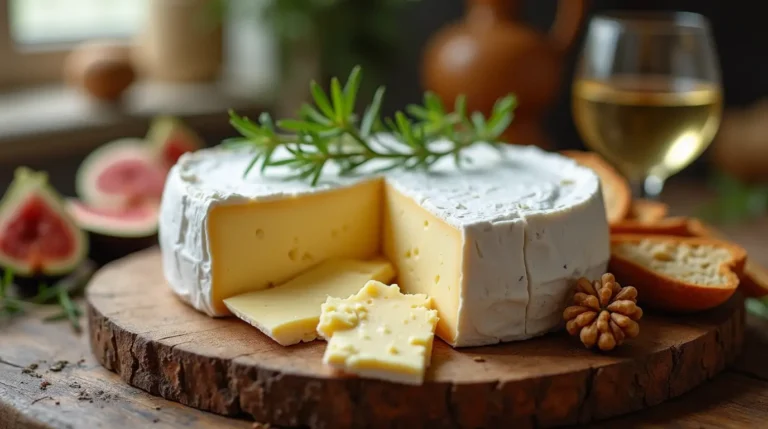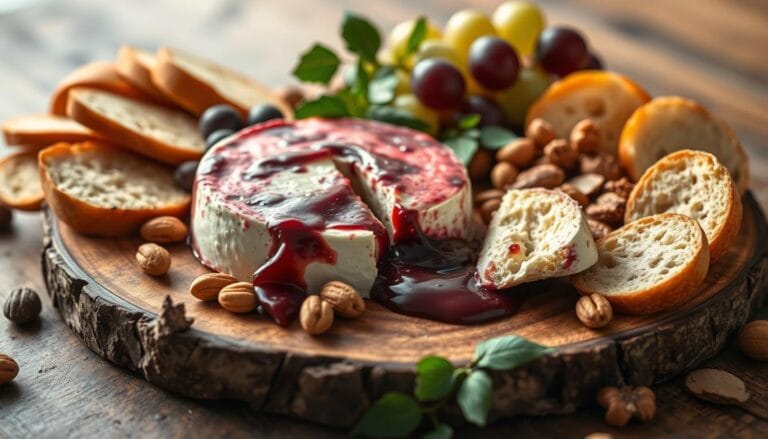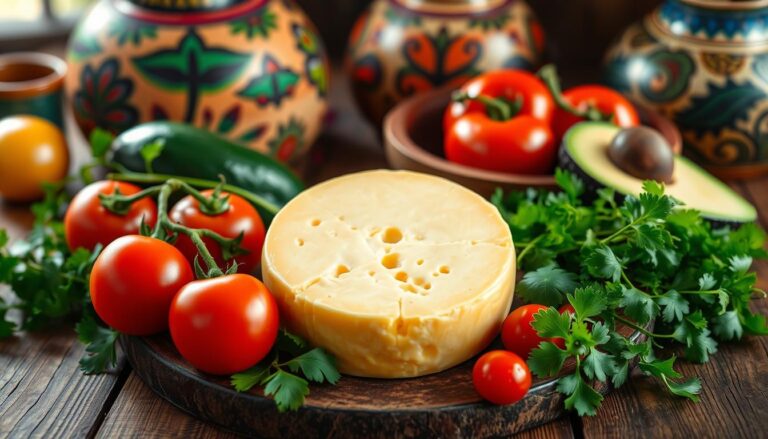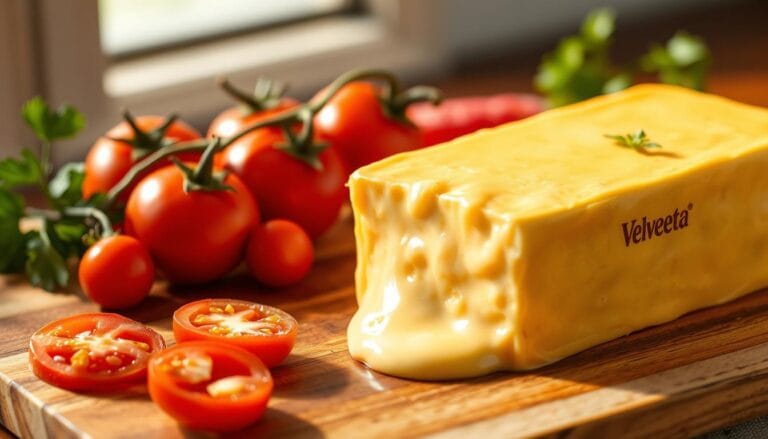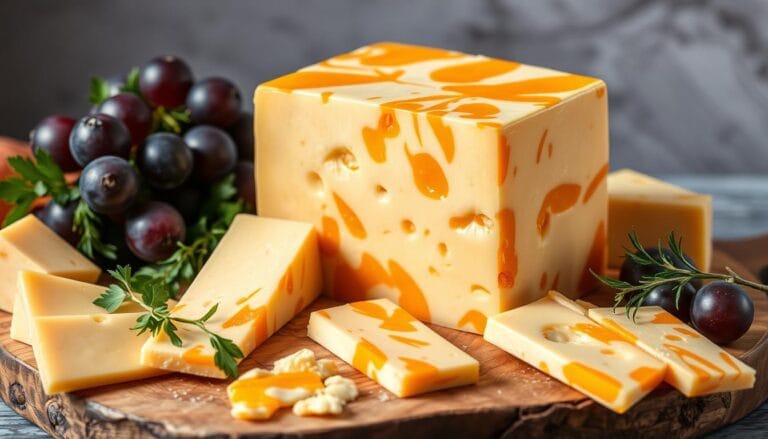Discover the Magic of Rope Cheese: A Stringy Delight
Walking through Oaxaca’s markets, you’re greeted by the smell of fresh quesillo, or rope cheese. This traditional Mexican cheese is loved for its unique stringy texture. It has won the hearts of many for centuries. Let’s explore the history, cultural importance, and cooking uses of this special cheese.
Table of Contents
Understanding the Origins and History of Rope Cheese
Rope cheese, also called quesillo, comes from Mexico’s rich dairy traditions. It started in Oaxaca, where Italian immigrants introduced the pasta filata method. This technique changed how the cheese was made.
Over time, quesillo became a key part of Oaxacan culture and food. Making this cheese from milk has been a family tradition for many generations. It shows the importance of this dairy product in the community.
Traditional Mexican Influences
The way rope cheese is made comes from Mexico’s long history of cheese-making. The pasta filata method, used to stretch and braid the cheese, shows the creativity of Oaxacan cheesemakers.
Evolution Through Centuries
As quesillo became more popular, it changed to fit local tastes and ways of making it. Its unique texture and taste have been perfected over the years. Now, it’s a favorite in Oaxacan food.
Cultural Significance in Dairy Making
Rope cheese is very important in Oaxaca, showing the area’s dairy traditions. Making quesillo is a big part of local identity. It’s used in many traditional dishes and celebrations.
| Country | Rope Cheese Variety | Key Characteristics |
|---|---|---|
| Slovakia | Korbáčiky | Salty sheep’s milk cheese, traditionally hand-pulled into strings and braided |
| Turkey | Dil peyniri | String cheese made from cow’s milk, known for its stringy texture, especially when melted |
| Armenia | Chechil | String cheese with a white base from aged goat or sheep milk, seasoned with black cumin and mahleb |
| Georgia and Russia | Tenili | String cheese made from fermented sheep’s milk and cream, matured for 60 days in a veal stomach |
| Ireland and the UK | Cheestrings | Real cheese snacks introduced in 1996, available in different flavors including Original and Twisted |
“Rope cheese is a cherished part of Oaxacan culinary heritage, reflecting the ingenuity and tradition of our artisanal cheesemakers.”
The Art of Making Rope Cheese
Discover the magic behind rope cheese, a beloved artisanal treat. Learn how simple milk turns into this tasty, stringy delight through the cheese-making process.
The journey starts with picking the best milk, often from local farms. The milk is warmed, and rennet is added to make the curds firm. This step is key to rope cheese’s unique texture.
The real skill is in stretching and kneading the curds. Cheesemakers carefully pull and twist the curd into long, stringy strands. This process needs great skill and patience to get it just right.
“The art of making rope cheese is a centuries-old tradition, passed down from generation to generation. It’s a true labor of love, where every twist and turn of the curd is imbued with the passion and expertise of the cheesemaker.”
Once shaped, the cheese is placed in molds to keep its form. It then ages, developing a rich flavor and texture. This creates a cheese that’s a true celebration of tradition, skill, and nature’s gifts.
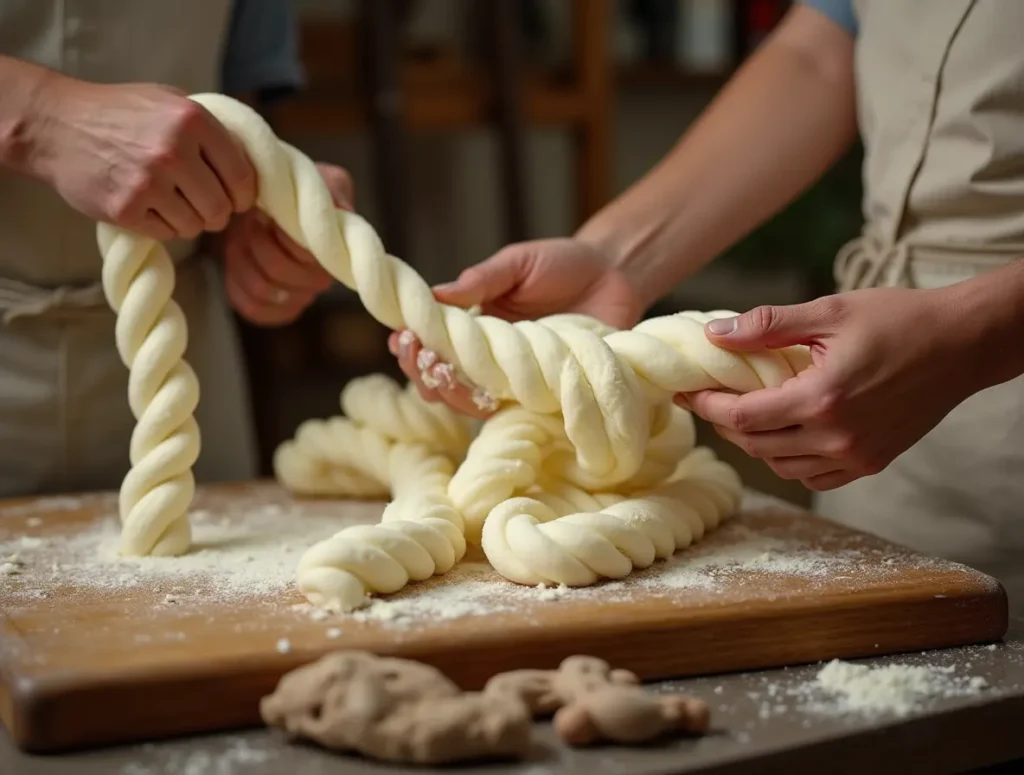
The making of rope cheese shows the art and hard work of artisanal cheesemakers. Every step is carefully done, making a cheese that’s a feast for the senses. It’s a true reflection of this ancient fermented milk product.
Essential Characteristics and Texture Profile
Rope cheese, a favorite from Mexico, is known for its string-like properties. This makes it easy to pull apart. Its mild, buttery flavor and slight tanginess create a balanced taste that many enjoy.
Its high moisture content is a key feature. Unlike many aged cheeses, rope cheese is often eaten fresh. This keeps its soft and supple texture. Some types may age briefly, adding depth to their flavor without losing their stringy texture.
There are many types of rope cheese, each with its own twist. You can find everything from the classic Quesillo Tradicional to the richer Quesillo Doble Crema and the lighter Quesillo Descremado. These options let cheese lovers explore and enjoy a wide range of flavors and textures.
| Rope Cheese Variety | Flavor Profile | Texture | Aging Process |
|---|---|---|---|
| Quesillo Tradicional | Mild, Buttery | Soft, Stringy | Fresh |
| Quesillo Doble Crema | Mild, Creamy | Soft, Supple | Brief Aging |
| Quesillo Descremado | Mild, Slightly Tangy | Soft, Delicate | Fresh |
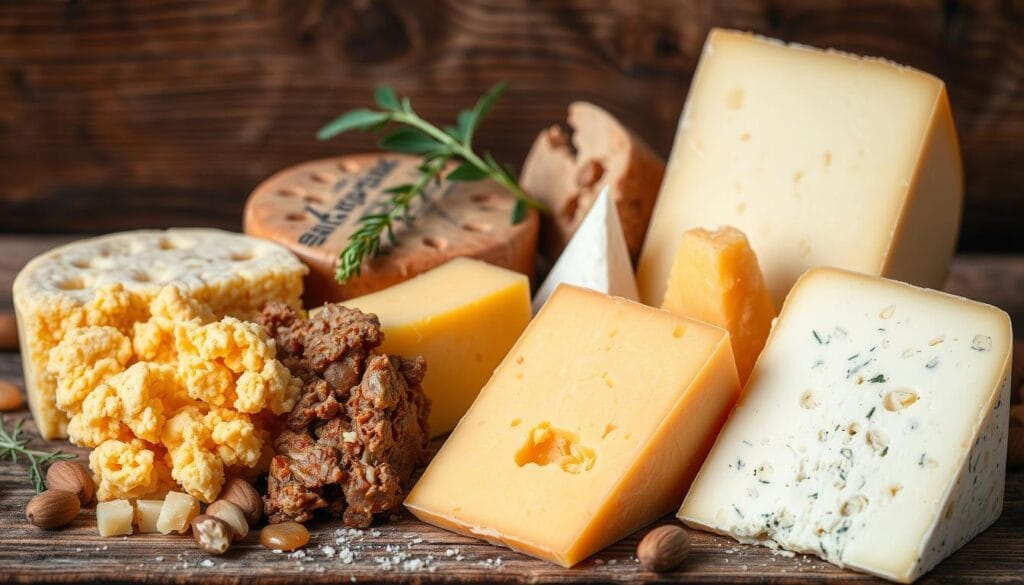
“Rope cheese is a true delight for cheese enthusiasts, offering a unique and captivating texture that sets it apart from other aged cheese varieties.”
Nutritional Benefits and Health Considerations
Rope cheese has both good and bad points. It’s a great source of protein and calcium, helping you stay healthy. But, it’s also high in fat and calories. So, eating it in moderation is important.
Rope cheese is very versatile. It goes well with many foods and drinks, perfect for cheese tastings and trying new recipes. It can make any dish more flavorful and interesting.
If you eat rope cheese as part of a balanced diet, it can be very beneficial. It adds unique flavors and textures to your meals. Knowing its nutritional value helps you enjoy it in a way that’s good for you.
FAQ
Q: What is rope cheese?
A: Rope cheese, also known as Oaxaca cheese or quesillo, is a unique Mexican dairy product. It has a string-like texture. It originated in Oaxaca and is a staple in Mexican cuisine.
Q: How is rope cheese made?
A: Making rope cheese involves heating milk and adding rennet to form curds. Then, the curd is stretched and kneaded to get its stringy texture. This process needs skill and precision.
Q: What are the characteristics of rope cheese?
A: Rope cheese has a unique string-like texture, making it easy to pull apart. It tastes mild and buttery with a slight tanginess. It’s high in moisture and best consumed fresh, though some types may age briefly.
Q: What is the cultural significance of rope cheese in Oaxaca?
A: Rope cheese, or quesillo, is deeply rooted in Oaxaca’s culture. It’s a key ingredient in local dishes and traditions. This reflects the region’s heritage and the influence of Italian immigrants who introduced the pasta filata technique.
Q: What are the health considerations with rope cheese?
A: Rope cheese is rich in protein and calcium, making it good for a balanced diet. But, it’s also high in fat and calories. So, it’s important to eat it in moderation. It pairs well with many foods and drinks, making it great for cheese tastings and culinary adventures.


